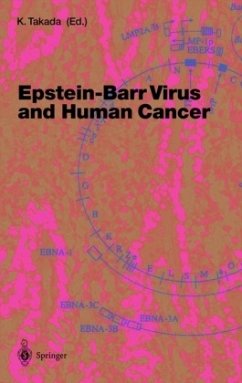
Epstein-Barr Virus
Latency and Transformation
Herausgeber: Robertson, Erle S
Versandkostenfrei!
Versandfertig in 1-2 Wochen
224,99 €
inkl. MwSt.

PAYBACK Punkte
112 °P sammeln!
Epstein-Barr virus (EBV) is a human gamma herpes virus that is best known for being the causative agent of infectious mononucleosis in man. A fascinating feature of this virus is its ability to persist in the host and it is estimated that more than 95% of adults are carriers of the virus. Importantly, EBV can transform latently infected primary cells from healthy individuals into cancerous ones, thereby causing important human cancers such as B-cell neoplasms (e.g. Burkitt's lymphoma and Post-transplant lymphomas), certain forms of T-cell lymphoma, and some epithelial tumours (e.g. gastric car...
Epstein-Barr virus (EBV) is a human gamma herpes virus that is best known for being the causative agent of infectious mononucleosis in man. A fascinating feature of this virus is its ability to persist in the host and it is estimated that more than 95% of adults are carriers of the virus. Importantly, EBV can transform latently infected primary cells from healthy individuals into cancerous ones, thereby causing important human cancers such as B-cell neoplasms (e.g. Burkitt's lymphoma and Post-transplant lymphomas), certain forms of T-cell lymphoma, and some epithelial tumours (e.g. gastric carcinomas). Understanding viral latency, what triggers viral reactivation and the mechanism of transformation of normal host cells into malignant cells are critical for the development of strategies for the prevention and control of this intriguing virus and related cancers. In this book, expert EBV virologists comprehensively review this important subject from a genetic, biochemical, immunological, and cell biological perspective. Topics include: latent infections, EBV leader protein, EBNA-1 in viral DNA replication and persistence, EBNA-2 in transcription activation of viral and cellular genes, the nuclear antigen family 3 in regulation of cellular processes, molecular profiles of EBV latently infected cells, latent membrane protein 1 oncoprotein, regulation of latency by LMP2A, role of noncoding RNAs in EBV-induced cell growth and transformation and the regulation of EBV latency by viral lytic proteins. This book is essential reading for all EBV virologists as well as clinical and basic scientists working on oncogenic viruses.












